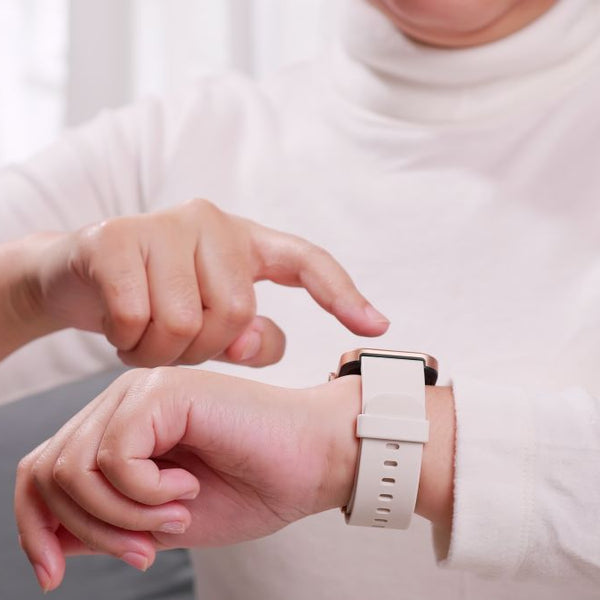Careline alarms provide peace of mind for older people, those with health conditions, or anyone who may need help in an emergency. Designed to support independent living, these systems allow users to call for help at the press of a button, whether they’re at home or out and about, depending on the model.
Jump to:
- How careline alarms work
- Setting up and using your careline alarm
- Do careline alarms contact friends or family?
- How to get a careline alarm
- How much do careline alarms cost?
- Will the Digital Switchover affect carelines?
- Are careline alarms the same as personal alarms?
How careline alarms work
A careline alarm is another name for a personal alarm service that connects individuals to a trained emergency response team, day or night. It typically consists of two key elements: the equipment and the careline telecare service.
Careline equipment
Careline alarm equipment is designed to be easy to use and reliable. The most common setup includes:
-
A base unit, which connects via a mobile network (SIM card). Some older models connect via a telephone landline instead.
-
A pendant alarm, usually worn around the neck or wrist, which allows the user to call for help if they feel unwell, fall or have an emergency.
More advanced models include fall detection, GPS tracking, and built-in microphones and speakers so they can be used both inside and outside the home.

How does a careline service work?
A careline alarm package comes with an easy to press button on the pendant and on the base unit. When either alarm button is pressed, it connects to a 24-hour emergency response team who will:
-
Speak to the user through the careline equipment
-
Assess the situation quickly and calmly
-
Contact the emergency services if needed
-
Inform nominated contacts, such as family members or neighbours
At Taking Care, our Emergency Resolution Team is trained to respond with professionalism and compassion, providing reassurance, not just emergency response.
Setting up and using your careline alarm
Setting up and using a careline alarm is straightforward, especially with the expert support and guidance from Taking Care. Here's how it works:
Setup
Most careline alarms are ready to use out of the box. Some systems use a home telephone line, while more modern alarms use a built-in SIM card, so no landline is needed. All of Taking Care’s alarms are digital with SIM cards included, so the base unit only needs to be plugged into the electrical socket.
Wearing the pendant
The user wears a lightweight pendant alarm on the wrist or around the neck. It’s designed to be comfortable and waterproof, so it can be worn even in the shower.
In an emergency
If the user feels unwell, falls or is in distress, they simply press the button on the pendant. The alarm connects them to a friendly, trained professional through the base unit or pendant with a built-in speaker.
Response and action
The emergency response team talks to the user, checks what help is needed, and arranges the right support, by contacting a loved one or getting emergency services involved.
Careline alarms like those from Taking Care are carefully designed to be reliable, easy to use, and quick to set up with ongoing support if needed.
Do careline alarms contact friends and family?

Some basic careline models will call friends or family instead of a professional emergency response team. However, these are unmonitored alarms, and while they may work well in some situations, there’s a risk that contacts might be unreachable or not respond quickly.
A monitored careline alarm, such as those offered by Taking Care, ensures that trained professionals are available to answer alarm calls 24/7, so help is always on hand. Friends and family can still be notified as part of the response, but the user doesn’t have to rely solely on them in an emergency.
Who are careline alarms for?
Careline alarms are particularly well-suited to elderly people who may need quick access to help in an emergency, offering reassurance and safety both at home and when out and about. Careline alarms are ideal for a wide range of people, including:
-
Older adults living alone, who want reassurance and the ability to get help if they fall or feel unwell
-
People with long-term health conditions, such as heart disease, diabetes or epilepsy or similar conditions that may require urgent assistance
-
Anyone recovering from surgery or illness, especially after hospital discharge
-
Vulnerable individuals, including those with learning difficulties or disabilities
-
Active older adults, who still enjoy going out and about: GPS-enabled alarms can offer freedom while staying connected to emergency support if needed.
How to get a careline alarm
Getting set up with a careline alarm is a simple process, whether you’re arranging it for yourself or a loved one. With Taking Care, you can order a careline alarm online or over the phone, and there’s no need for an engineer visit. Once your chosen alarm arrives, it’s easy to set up at home.
All Taking Care alarms simply plug in and come ready to use with a built-in SIM card. If you need any help, our friendly UK-based team is always available to guide you through the process and make sure everything is working properly.
For those who prefer to arrange their own careline alarm privately, Taking Care offers a range of options to suit different needs and budgets, all with no long-term contracts or hidden fees.
How much do careline alarms cost?
Careline alarms are an affordable way to help older people and those with health conditions remain safe and independent at home. In-home careline alarms prices start from just £20 per month, with fall detection and GPS tracker alarms also available.
Will the Digital Switchover affect careline alarms?

The UK’s digital switchover will replace all analogue telephone lines with digital ones by 2027. If you have a landline careline alarm it maybe affected and we recommend you contact your careline provider to find out more. You can read more advice here.
All digital careline alarms from Taking Care are designed to work independently of the traditional phone network. They use a SIM to communicate, meaning they are unaffected by the phone line switchover and any future network changes.
If you’re considering a new careline alarm, it’s important to choose one that’s fully compatible with the upcoming digital network changes. Cheaper careline alarms that use a telephone landline may not work on the new digital system because older analogue equipment is not 100% compatible with the digital lines. Find out more about how the digital switchover will affect careline alarms.
Are careline alarms the same as personal alarms?
Yes, the terms ‘careline alarm’ and ‘personal alarm’ are often used interchangeably. Both refer to the same type of system: an emergency alarm designed to help elderly or vulnerable people access help quickly.
Some providers may use different terminology, but the principle is the same; providing support at the touch of a button to help people live independently and safely.
Compare personal alarms from Taking Care
Find out more about the different types of elderly alarms and how personal alarms work.






